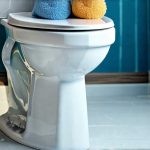Living with an overactive bladder or frequent urges can be incredibly disruptive, impacting daily life in ways many people don’t understand. It’s not simply about inconvenience; it’s often linked to anxiety, social isolation, and a constant feeling of being controlled by your own body. While medical interventions are crucial for diagnosis and treatment plans, the environment within your home plays a surprisingly significant role in managing bladder health and promoting relaxation. Many individuals underestimate the power of small changes to their surroundings – changes that can dramatically reduce stress and contribute to a calmer nervous system, directly benefiting bladder function. This article will explore practical tips for creating a home environment geared towards bladder relaxation, fostering a sense of control, and improving overall well-being.
The goal isn’t about radically redesigning your living space; it’s about making mindful adjustments that prioritize comfort, reduce anxiety triggers, and support healthy habits. A relaxed mind often translates to a relaxed bladder, decreasing the frequency of urgent sensations. We’ll focus on creating an atmosphere that encourages mindfulness, reduces stress associated with quick access to bathrooms, and supports routines that promote overall calm. This isn’t about eliminating life – it’s about adapting your environment so life doesn’t feel constantly dictated by your bladder.
Creating a Sanctuary of Calm
A core principle for bladder relaxation is minimizing stress within the home. Stress directly impacts the nervous system, which in turn affects bladder control. A cluttered or chaotic environment can subconsciously contribute to anxiety and heightened sensitivity, increasing the likelihood of urgent sensations. Therefore, decluttering isn’t just about aesthetics; it’s a vital step towards creating a more peaceful mental space. Consider adopting minimalist principles – even if you don’t fully embrace minimalism, reducing visual clutter will have a positive effect. Focus on creating zones within your home dedicated to specific activities: a reading corner, a relaxation area, and so on. To further reduce stress in your daily routine, consider these stress reduction techniques for pelvic muscle health.
Furthermore, incorporating calming sensory elements can profoundly impact your nervous system. Soft lighting (avoid harsh fluorescent lights), soothing colors (blues, greens, and neutrals are often recommended), and natural textures like wood or cotton can all contribute to a more peaceful atmosphere. Consider adding houseplants – studies show they reduce stress levels and improve air quality. Sound is also crucial; soft music, nature sounds, or even complete silence can be incredibly beneficial. The aim is to create a space where you instinctively feel calmer simply by being in it. This isn’t about creating perfection, but rather prioritizing an environment that supports your mental well-being and consequently, bladder health.
Finally, think about the flow of your home. Are there obstacles or tight spaces that cause anxiety? Ensure pathways are clear and easy to navigate, reducing any sense of being rushed or constricted. This is particularly important if you experience urgency – a clear path to the bathroom can alleviate some stress associated with needing to go quickly.
Optimizing Bathroom Accessibility Without Heightening Anxiety
One of the biggest concerns for individuals with bladder issues is accessibility to a toilet. However, simply making bathrooms more accessible shouldn’t inadvertently create anxiety. The goal isn’t to be constantly reminded of your bladder; it’s about ensuring convenience without triggering fear or urgency. – Install nightlights in bathrooms and hallways: This reduces the need for bright lights during nighttime trips, minimizing stimulation. – Ensure clear pathways to all bathrooms from frequently used rooms: A smooth and unobstructed route can reduce stress associated with needing to go quickly. – Consider grab bars if balance is a concern: But ensure they don’t create a clinical or overly-medicalized feel; prioritize discreet options.
The key here is balance. Avoid creating an environment that constantly reminds you of your bladder condition. For example, avoid placing multiple mirrors directly facing the toilet – this can increase self-awareness and potentially heighten anxiety about bodily functions. Instead, focus on functional accessibility combined with calming aesthetics. A bathroom should be a place of hygiene and relaxation, not a source of worry. Creating calm evenings is also beneficial, as suggested by these evening recovery tips.
The Power of Comfortable Seating & Support
The way you sit throughout the day significantly impacts pelvic floor muscles, which play a vital role in bladder control. Prolonged sitting in uncomfortable positions can put strain on these muscles, potentially exacerbating symptoms. – Choose ergonomic chairs with good lumbar support: This promotes proper posture and reduces strain on the pelvic floor. – Incorporate regular breaks from sitting: Get up and move around every 30-60 minutes to prevent muscle fatigue. – Use cushions or pillows for added comfort and support: Especially when sitting for extended periods.
Furthermore, consider the surfaces you sit on. Hard chairs can be particularly uncomfortable. Soften them with cushions or blankets. When resting, choose positions that allow your pelvic floor muscles to relax – lying down with a pillow under your knees is often recommended. Prioritizing comfortable and supportive seating isn’t about luxury; it’s about actively supporting your pelvic health. This simple adjustment can have a significant impact on reducing tension and promoting bladder control. You might also find these daily routines helpful for ongoing support.
Mindfulness & Relaxation Techniques at Home
Integrating mindfulness and relaxation techniques into your daily routine can profoundly benefit bladder health. Stress is a major trigger for overactive bladder symptoms, so learning to manage stress effectively is crucial. – Practice deep breathing exercises: Even five minutes of focused breathing can calm the nervous system. – Incorporate meditation or yoga into your routine: These practices promote relaxation and mindfulness. – Create a designated “relaxation corner”: A quiet space where you can unwind without distractions.
These techniques aren’t about eliminating stress entirely; they’re about developing coping mechanisms to manage it effectively. Consider using guided meditations specifically designed for pelvic floor health or bladder control – these often incorporate visualization techniques that promote relaxation and reduce anxiety. Remember, consistency is key. Even a few minutes of daily practice can make a significant difference over time. The home environment should facilitate these practices by providing a calm and peaceful space conducive to mindfulness and relaxation. Learning breath-linked relaxation techniques may also provide relief.





















